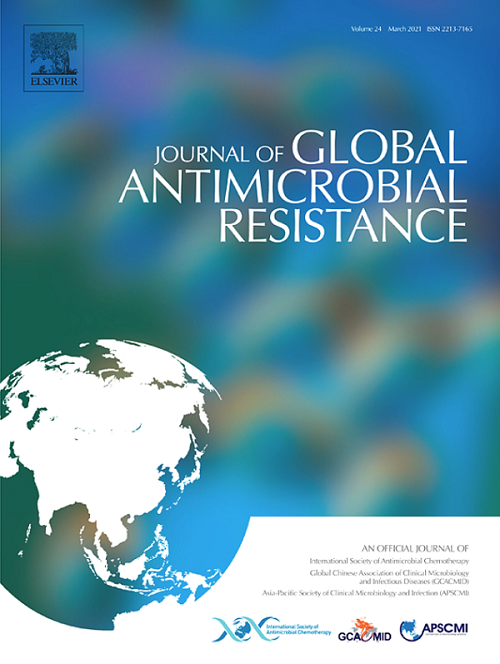Detection of resistance genes and evaluation of synergistic effects of antibiotic combinations in colistin-resistant Klebsiella pneumoniae clinical isolates
IF 3.7
3区 医学
Q2 INFECTIOUS DISEASES
引用次数: 0
Abstract
OBJECTIVE
Rising antimicrobial resistance in Klebsiella pneumoniae is major public health issue, linked to high morbidity, and mortality. This study aims to identify resistance genes in Klebsiella pneumoniae strains from a university hospital in Istanbul, and to determine effects of combining several commonly used antibiotics.
BACKGROUND
Excessive antibiotic use has increased prevalence of antibiotic resistance in Klebsiella pneumoniae isolates severely limiting treatment options for clinicians.
METHODS
Twenty-one consecutive resistant Klebsiella pneumoniae isolates from various samples from Hospitals of Bezmialem Vakıf University were analyzed. Identifications and susceptibilities were done using commercial methods (VITEK MS, VITEK®2, bioMérieux). Colistin resistance was assessed by microdilution test and resistance genes (blaKPC, blaOXA48, blaNDM) were detected via PCR using specific primers. Checkerboard testing was used to determine colistin(C), meropenem(M), gentamycin(G), trimethoprim/sulphamethoxazole(B), ceftazidime/avibactam(S), and tigecycline(T) susceptibilities singly or in combinations.
RESULTS
All strains were blaOXA48 positive whereas 19% blaNDM positive, and 4.7% blaKPC positive. Preliminary data showed synergism in significant number of isolates particularly in C+S, C+M, and C+T combinations, though not uniformly. Also, significant amount of additive effect and indifferent interactions, where antibiotics did not interact with each other, were noticed in different isolate-antibiotic combinations. It should be underlined that these data are preliminary, and clearer picture may be obtained by increasing number of samples.
CONCLUSIONS
While detection of blaOXA-48 in all strains is expected, detection of blaKPC in 4.7% and blaNDM in 19% of strains is concerning. Significant interactions were noted with some antibiotic combinations and further testing with large number of isolates is suggested.
求助全文
约1分钟内获得全文
求助全文
来源期刊

Journal of global antimicrobial resistance
INFECTIOUS DISEASES-PHARMACOLOGY & PHARMACY
CiteScore
8.70
自引率
2.20%
发文量
285
审稿时长
34 weeks
期刊介绍:
The Journal of Global Antimicrobial Resistance (JGAR) is a quarterly online journal run by an international Editorial Board that focuses on the global spread of antibiotic-resistant microbes.
JGAR is a dedicated journal for all professionals working in research, health care, the environment and animal infection control, aiming to track the resistance threat worldwide and provides a single voice devoted to antimicrobial resistance (AMR).
Featuring peer-reviewed and up to date research articles, reviews, short notes and hot topics JGAR covers the key topics related to antibacterial, antiviral, antifungal and antiparasitic resistance.
 求助内容:
求助内容: 应助结果提醒方式:
应助结果提醒方式:


